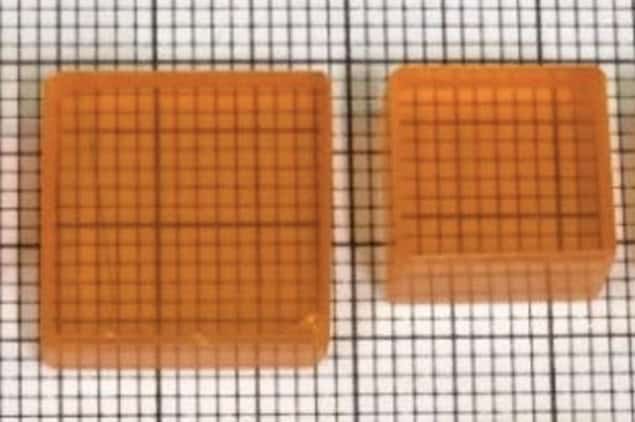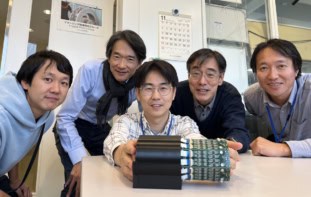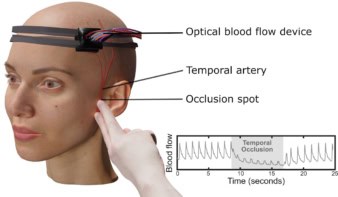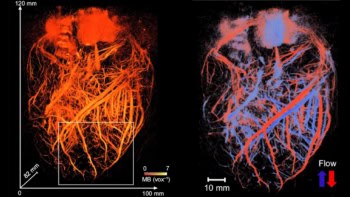
A perovskite semiconductor that can detect and image single gamma-ray photons with both high-spatial and high-energy resolution could be used to create next-generation nuclear medicine scanners that can image faster and provide clearer results. The perovskite is also easier to grow and much cheaper than existing detector materials such as cadmium zinc telluride (CZT), say the researchers at Northwestern University in the US and Soochow University in China who developed it.
Nuclear medicine imaging techniques like single-photon emission computed tomography (SPECT) work by detecting the gamma rays emitted by a short-lived radiotracer delivered to a specific part of a patient’s body. Each gamma ray can be thought of as being a pixel of light, and after millions of these pixels have been collected, a 3D image of the region of interest can be built up by an external detector.
Such detectors are today made from either semiconductors like CZT or scintillators such as NaI:TI, CsI and LYSO, but CZT detectors are expensive – often costing hundreds of thousands to millions of dollars. CZT crystals are also brittle, making the detectors difficult to manufacture. While NaI is cheaper than CZT, detectors made of this material end up being bulky and generate blurrier images.
High-quality crystals of CsPbBr3
To overcome these problems, researchers led by Mercouri Kanatzidis and Yihui He studied the lead halide perovskite crystal CsPbBr3. They already knew that this was an efficient solar cell material and recently, they discovered that it also showed promise for detecting X-rays and gamma rays.
In the new work, detailed in Nature Communications, the team grew high-quality crystals of CsPbBr3 and fabricated them into detector devices. “When a gamma-ray photon enters the crystal, it interacts with the material and produces electron–hole pairs,” explains Kanatzidis. “These charge carriers are collected as an electrical signal that we can measure to determine both the energy of the photon and its point of interaction.”
The researchers found that their detectors could resolve individual gamma rays at the energies used in SPECT imaging with high resolution. They could also sense extremely weak signals from the medical tracer technetium-99m, which is routinely employed in hospital settings. They were thus able to produce sharp images that could distinguish features as small as 3.2 mm. This fine sensitivity means that patients would be exposed to shorter scan times or smaller doses of radiation compared with NaI or CZT detectors.
Ten years of optimization
“Importantly, a parallel study published in Advanced Materials the same week as our Nature Communications paper directly compared perovskite performance with CZT, the only commercial semiconductor material available today for SPECT, which showed that perovskites can even surpass CZT in certain aspects,” says Kanatzidis.
“The result was possible thanks to our efforts over the last 10 years in optimizing the crystal growth of CsPbBr3, improving the electrode contacts in the detectors and carrier transport and nuclear electronics therein,” adds He. “Since the first demonstration of high spectral resolution by CsPbBr3 in our previous work, it has gradually been recognized as the most promising competitor to CZT.”

Could next-generation perovskite detectors improve clinical X-ray imaging?
Looking forward, the Northwestern–Soochow team is now busy scaling up detector fabrication and improving its long-term stability. “We are also trying to better understand the fundamental physics of how gamma rays interact in perovskites, which could help optimize future materials,” says Kanatzidis. “A few years ago, we established a new company, Actinia, with the goal of commercializing this technology and moving it toward practical use in hospitals and clinics,” he tells Physics World.
“High-quality nuclear medicine shouldn’t be limited to hospitals that can afford the most expensive equipment,” he says. “With perovskites, we can open the door to clearer, faster, safer scans for many more patients around the world. The ultimate goal is better scans, better diagnoses and better care for patients.”



